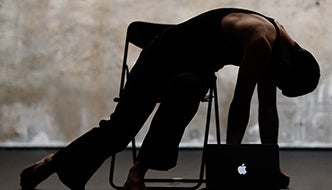The Curtis R. Priem Experimental Media and Performing Arts Center (EMPAC) has announced the fall 2016 season of concerts, film screenings, dance performances, talks, and events. As the nation’s most technologically advanced university performing arts center, EMPAC specializes in time-based art productions that explore the human relationship to emerging media technologies, challenge the boundaries of traditional performance genres, and provoke new ideas about how art and science intersect in the contemporary moment.
EMPAC productions are carefully selected by an in-house curatorial team, and are often the product of commissioned artist residencies, which provide space, time, resources, and expertise for artists to realize ideas that would be technically impossible elsewhere.
A hallmark of the fall 2016 season is the unveiling of EMPAC’s recently constructed wave-field array. Consisting of 496 independently controllable loudspeakers, this audio system is one of the most precise in the world, and capable of creating a 3-D “holophonic” sound environment. More immersive than ordinary surround sound, “wave field synthesis” allows composers to place sounds in specific spatial locations around the audience and will figure heavily into future EMPAC electronic music programming. On Sept. 2, Rensselaer arts professor Rob Hamilton will perform on the system for the first time. His composition 108 Troubles will also be open as a free interactive installation until the performance date.
Approaching immersive sound through very simple, analog means, EMPAC director Johannes Goebel’s installation The SubBassProtoTon will also be free to explore on the public mezzanine throughout the season. A walk-in cubicle organ pipe, the ProtoTon allows visitors to physically experience frequencies that are too low for audible perception and to interactively explore sound when it reaches the range of hearing.
San Francisco-based artist Patricia L Boyd will finalize a multi-part film-production residency on Sept. 1 with the screening of her as-of-yet-unnamed work. The project was shot with an intricate rig of cameras, configured to document the performer Nour Mobarak from all angles. A meditation on labor and exhaustion, the piece is a response to writings by poet Anne Boyer, who will read a commissioned text before the screening.
EMPAC’s new curator of theater and dance, Ashley Ferro-Murray, will present her first event on Sept. 7. Dancer-choreographer Jonah Bokaer will perform a trio of solos, under the title Three Cases for Amnesia. The show will feature Bokaer dancing alongside a digitally animated avatar, which both mirrors Bokaer’s movements and challenges the technical abilities of his physical body.
Pianist Mabel Kwan, who last performed at EMPAC in 2015, will return on Sept. 22 to take on composer Georg Friedrich Haas’ notoriously challenging piece Trois Hommages, which will require her to perform on two pianos simultaneously. This performance is part of a residency in which Kwan will record the rarely performed piece for future release.
One can make out the surface only by placing any dark-colored object on the ground is artist Hannah Rickards’ new film, which uses a cable-suspended camera. The title refers to a technique for navigating in polar white-out conditions, which was used in the film’s production. On Sept. 29 the piece will be performed live only once before going on to tour as a video installation.
While many of the above productions mark the completion of an EMPAC residency, other residencies will get their start this season or come to fruition in a different form. In September, violinist Olivia de Prato will be in residence to record solo works by composers Reiko Futing, Taylor Brook, Ned Rothenberg, and more. Meanwhile, dance and theater artist Mary Armentrout will be working with media artist Ian Winters on a site-specific performance using wearable movement sensors and video. In October, interactive electronics artist Andrew Schneider will be in residence with collaborators to develop and rehearse Unified Field Theory, a production that uses projection mapping and 3-D sound spatialization. This project will premiere in fall 2017.
To read more about the fall season, or for tickets and more information, visit EMPAC’s website.


